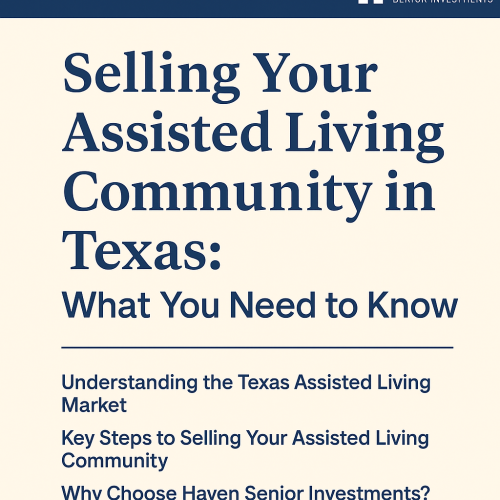Opportunity Zones still have the real estate investment world abuzz. Created as part of the Federal Government’s Tax Cuts & Jobs Act signed in December 2017, opportunity zones are designated economically distressed communities where investments may receive preferential tax treatment.
When Opportunity Zones were created, vague guidelines brought up many questions about how they would be designated, which investments qualified, and how the tax guidelines would apply, according to a survey of real estate owners, developers, brokers and investment managers conducted by Bisnow1. The first set of Opportunity Zones, covering parts of 18 states, were designated on April 9, 2018. Today, Opportunity Zones have been designated in every state, five U.S. territories and Washington, D.C., and with the Treasury and Internal Revenue Service issuing some clarifying regulations2 in October 2018, even more appetite for this investment exists.
In 2018, KeyBank Real Estate Capital, one of the nation’s leading affordable housing lenders, created a Qualified Opportunity Fund (QOF), to make investments in low-income housing and affordable housing projects across KeyBank’s footprint in the United States. A QOF is a partnership or corporation that plans to invest at least 90 percent of its holdings in one or more qualified Opportunity Zones.
While this fund made all investments by December 31, 2018, KeyBank and its clients are poised to be active players in the Opportunity Zone market in 2019. The Opportunity Zones program allows KeyBank to continue to help communities thrive, while bringing new avenues for financing much-needed affordable housing deals to investors and developers.
The 1-2-3 of Opportunity Zone Tax Incentives
When investors participate in Opportunity Zones through a QOF, they can access exclusive capital gains tax incentives. To qualify for the tax breaks, investors must generally invest their capital gains in a QOF within 180 days of the sale of the property (special rules exist for partners receiving gains via their partnership interest). Investors can defer tax on any prior gains invested in a QOF until the earlier of when the investment is sold or exchanged or December 31, 2026. Here’s how it works:
- If the investment is held for 5 years, the investor receives a 10 percent exclusion of the deferred gain. To put this another way, once the investor settles that gain after the five years, they will only be taxed on 90 percent of the original gain.
- If the investment is held for 7 years, the exclusion goes up to 15 percent (or, 85 percent of the original gain will be taxed).
- If the investor holds the investment for at least 10 years, any post acquisition appreciation of the investment will be tax free.
Momentum Grows as Local Governments & Investors See Potential
While the new Tax Cuts & Jobs Act created the Opportunity Zones, it also lowered the corporate tax rate, making the Low Income Housing Tax Credits (LIHTC) that were tied to this rate less attractive to investors. The LIHTC program had previously been a primary driver of investment in economically distressed communities, but the decreased tax benefits have slowed some LIHTC activity. The Opportunity Zone program aims to reactivate private investment, but its inception raised many questions about what the impact would be on the affordable housing markets.
To begin, the program had to become much more broad, and it did. State governments must nominate local census tracts for consideration as Opportunity Zones by the Secretary of the Department of Treasury. To qualify, they must meet the definition of a low-income community, or be contiguous to a low-income community and have a median family income that does not exceed 125 percent of the adjacent qualifying tract. States could nominate up to 25 percent of their low-income communities. As of December 2018, the Treasury has certified more than 8,700 communities nationwide3, representing 35 million Americans, as Opportunity Zones.
The program also had to answer some questions about the terms of the tax benefits. The regulations released in late 2018 clarified a number of issues, including:
- The original legislation laid out that a QOF is required to have 90 percent of its assets in qualified opportunity zone property, and that the qualified opportunity zone business must have “substantially all” of its tangible property within an opportunity zone. The proposed regulations define “substantially all” as 70 percent.4
- What happens when an investor holds on to their investment for past the 10-year expiration of the designation? According to the Treasury Department guidance5, “opportunity zones retain their designation for 10 years, but under the proposed regulations, investors can hold onto their investments in Qualified Opportunity Funds through 2047 without losing tax benefits.”
After issuing the proposed regulations, Treasury Secretary Steve Mnuchin6 stated during a press conference, “We anticipate that $100 billion in private capital will be dedicated to creating jobs and economic development in opportunity zones.”
Picking Up Speed: Opportunity Zone Investment in 2019
Clearly, Opportunity Zone investment holds a wealth of – pardon the pun – opportunity for communities and investors, but it’s also a complicated and still-evolving area of tax code. The new guidelines in late 2018 brought more clarity and heightened interest, but some investors are being prudent and waiting for additional structure around the terms.
KeyBank Real Estate Capital and KeyBank Community Development Lending and Investment have been committed to helping communities thrive for decades. We’re continuing this work by helping investors and affordable housing developers understand and take advantage of the potential of the new Opportunity Zone program. By creating a QOF and aiding our clients in setting up and deploying future proprietary or multi-investor funds, we can complement our comprehensive debt platform, and help bring much-needed affordable housing deals to fruition.
Key Learning Points:
- Opportunity Zones were created as part of the Tax Cuts & Jobs Act to help spur private investment in economically distressed U.S. communities.
- A Qualified Opportunity Fund (QOF) must invest at least 90 percent of its holdings in one or more qualified Opportunity Zones.
- Investors can receive incremental tax exclusions on capital gains by investing in a QOF and holding the investment for 5, 7 or 10 or more years.
- New proposed regulations in October 2018 clarified some of the terms and designations of the Opportunity Zone program.
- More than 8,700 Opportunity Zones have been designated nationwide.
This piece is not intended to provide specific tax or legal advice. You should consult with your own advisors about your particular situation.
Banking products and services are offered by KeyBank National Association. All credit, loan and leasing products subject to credit approval. Key.com is a federally registered service mark of KeyCorp.
KeyBank is Member FDIC.
1Pimental, Joseph. From Gentrification To Lack Of Guidance, Investors Express Concerns With Opportunity Zone Program. Bisnow, November 2018. https://www.bisnow.com/national/news/commercial-real-estate/from-gentrification-to-lack-of-guidance-investors-express-concerns-with-opportunity-zone-regulations-94706
2Internal Revenue Service. Treasury, IRS issue proposed regulations on new Opportunity Zone tax incentive. October 2018. https://www.irs.gov/newsroom/treasury-irs-issue-proposed-regulations-on-new-opportunity-zone-tax-incentive
3U.S. Department of Treasury Community Development Financial Institutions Fund. Opportunity Zones Resources. https://www.cdfifund.gov/pages/opportunity-zones.aspx
4Fornwalt, Alec and Buhl, John. Treasury Department Proposes New Regulations for Opportunity Zones. Tax Foundation, October 2018. https://taxfoundation.org/new-proposed-opportunity-zones-regulations/
5U.S. Department of the Treasury. Treasury Releases Proposed Regulations on Opportunity Zones Designed to Incentivize Investment in American Communities. October 2018. https://home.treasury.gov/news/press-releases/sm530
6Manchester, Julia. Mnuchin predicts $100B in cap investment from new opportunity zones. The Hill, September 2018. https://thehill.com/hilltv/rising/408980-mnuchin-predicts-100b-in-cap-investment-from-new-opportunity-zones
Written by: Irena Edwards
March 2019






